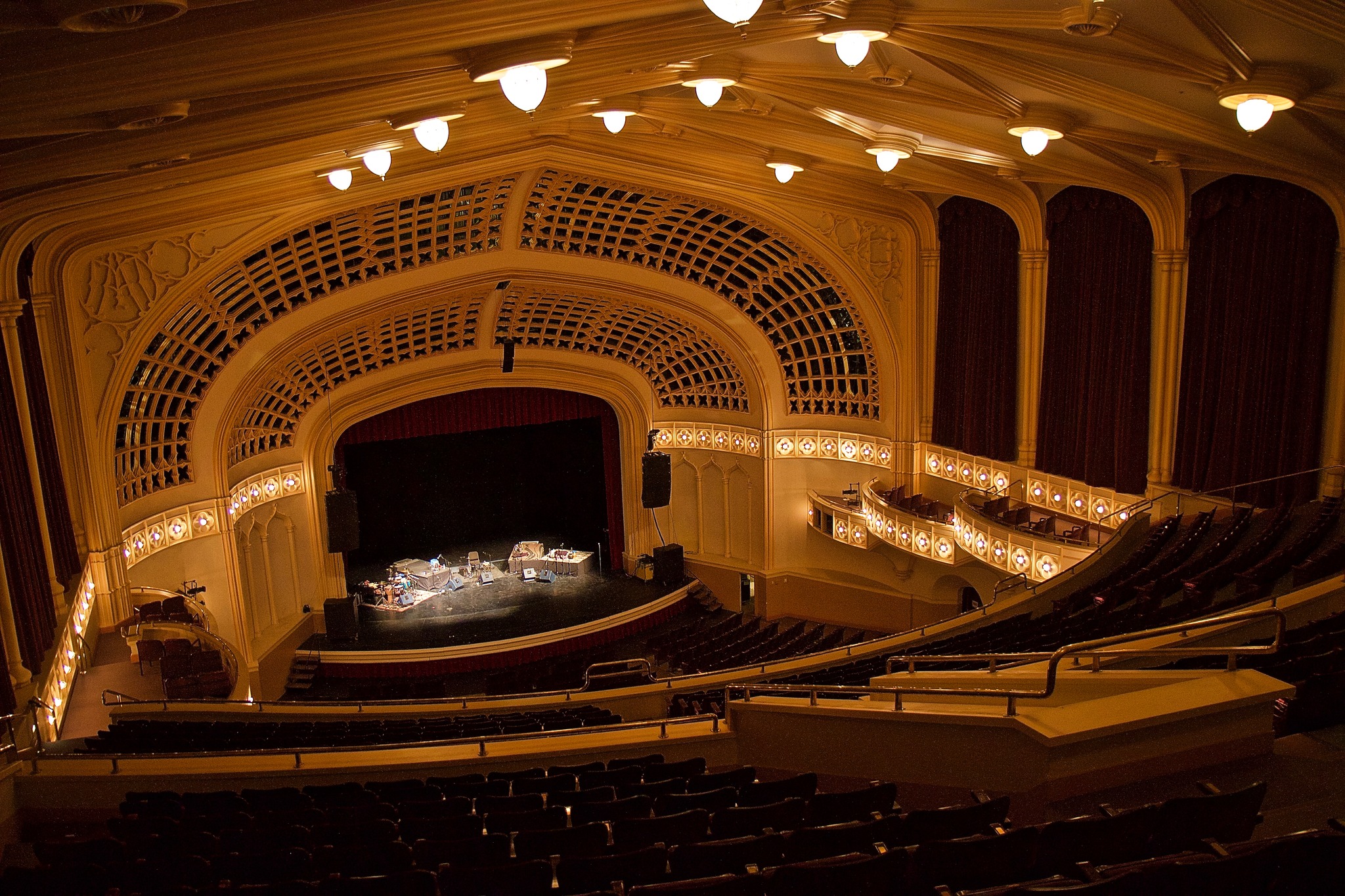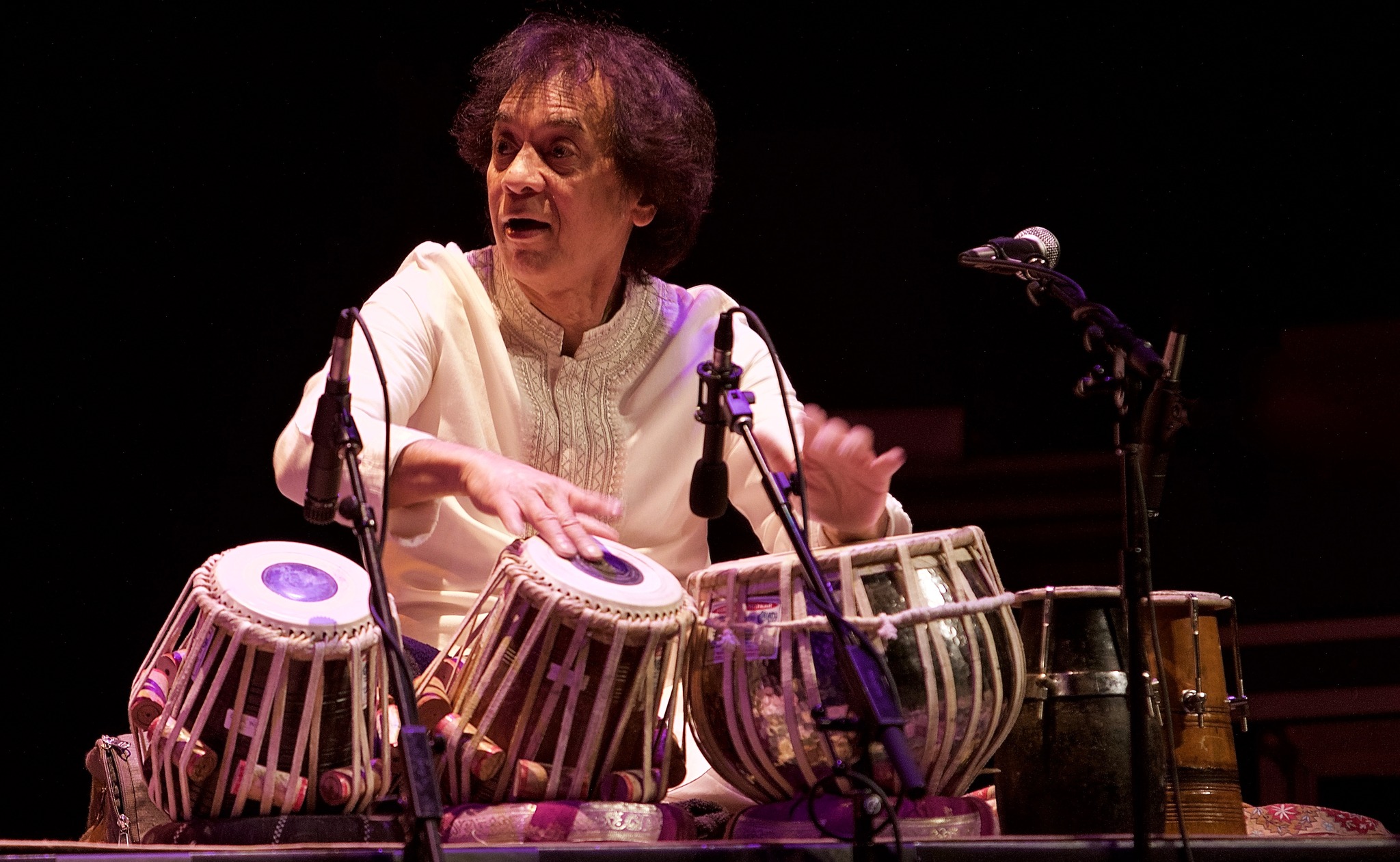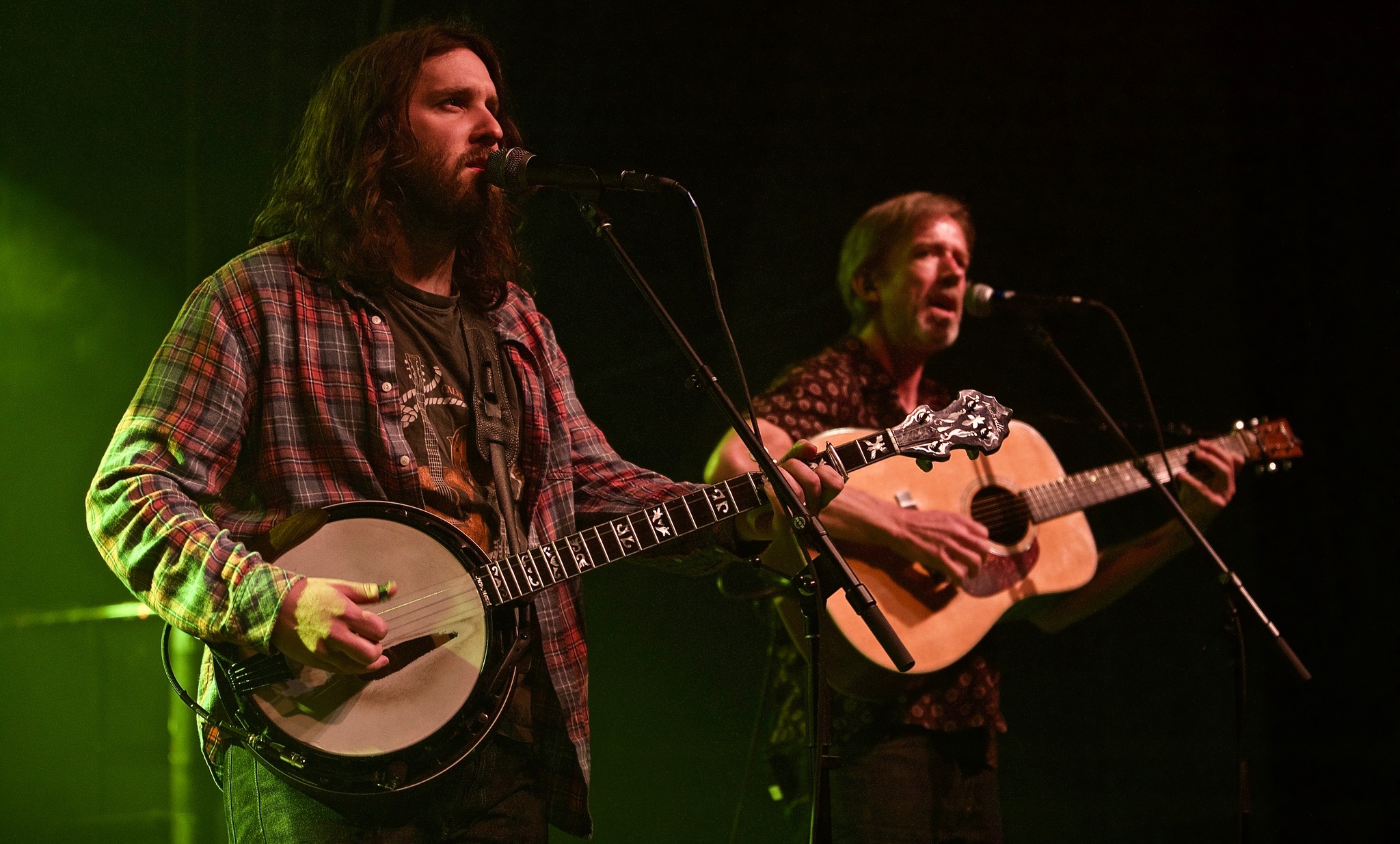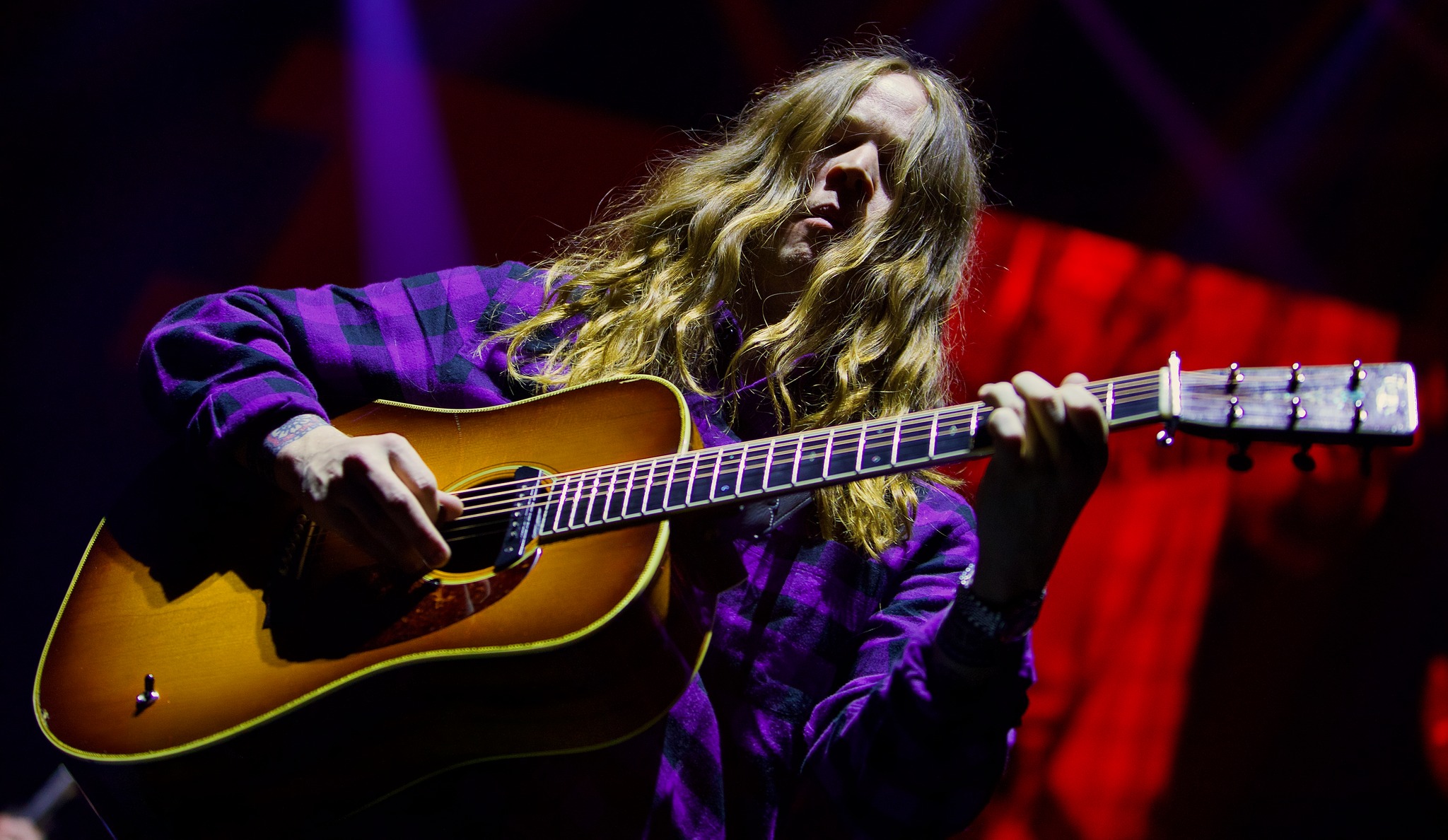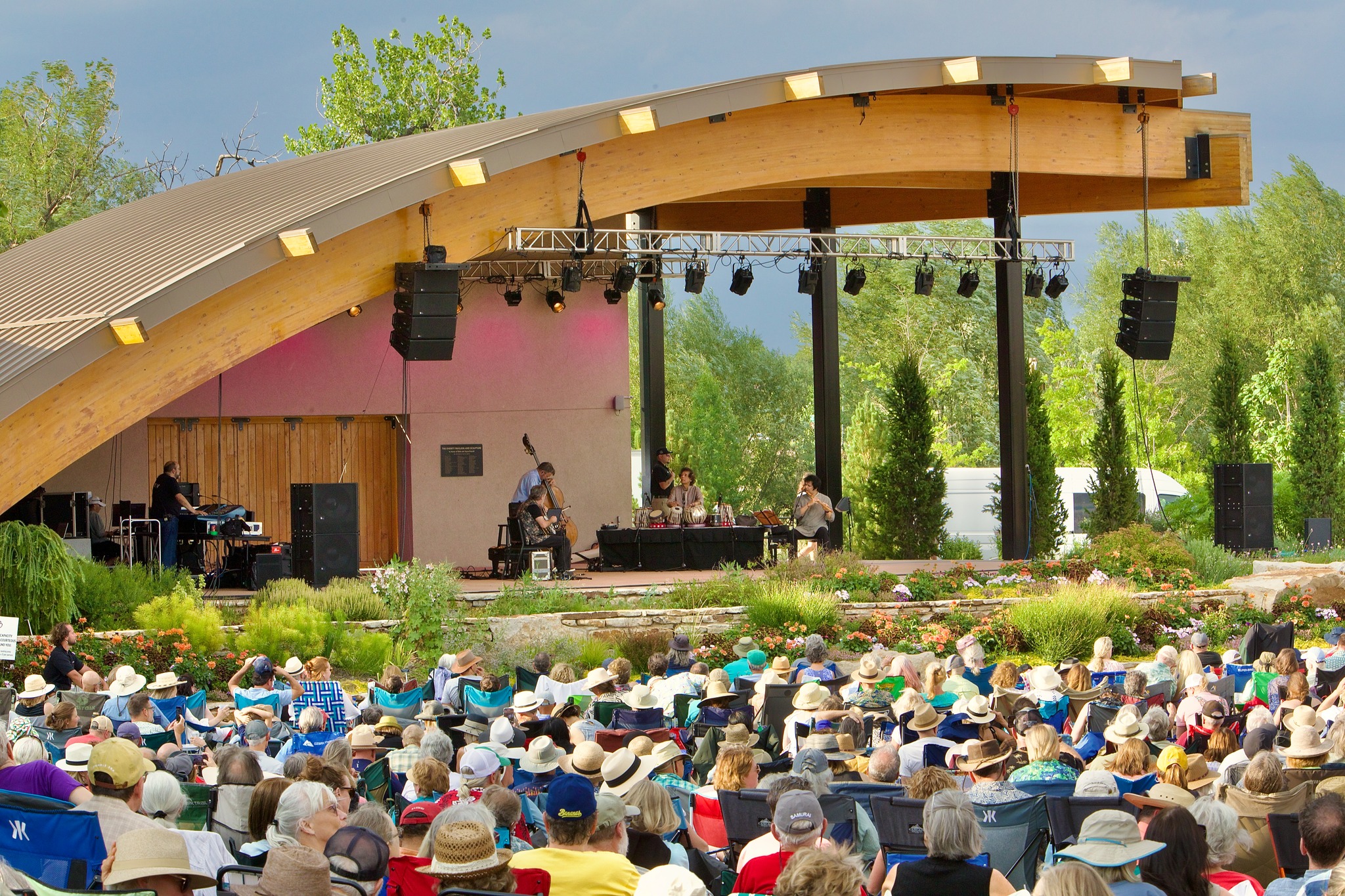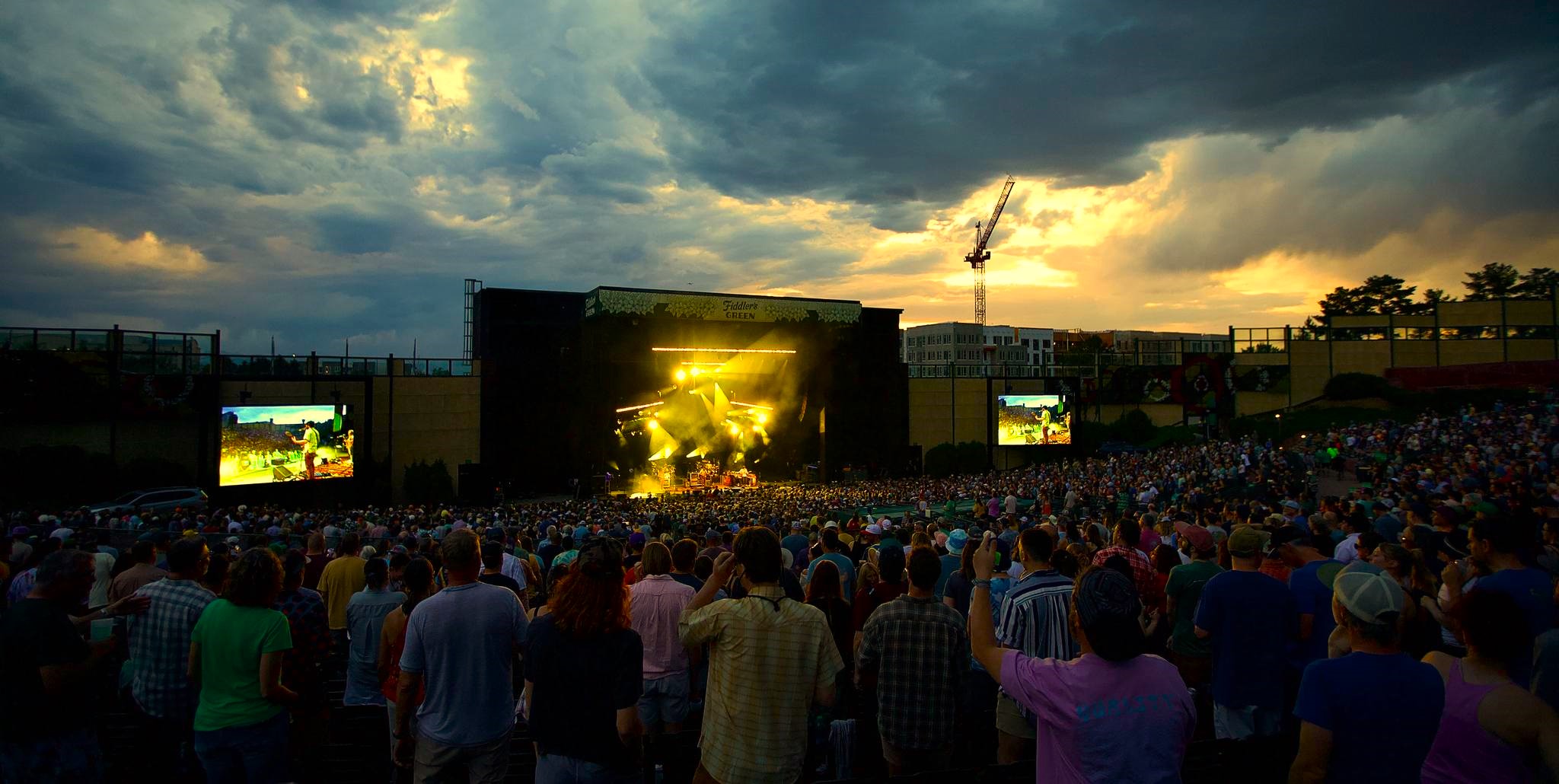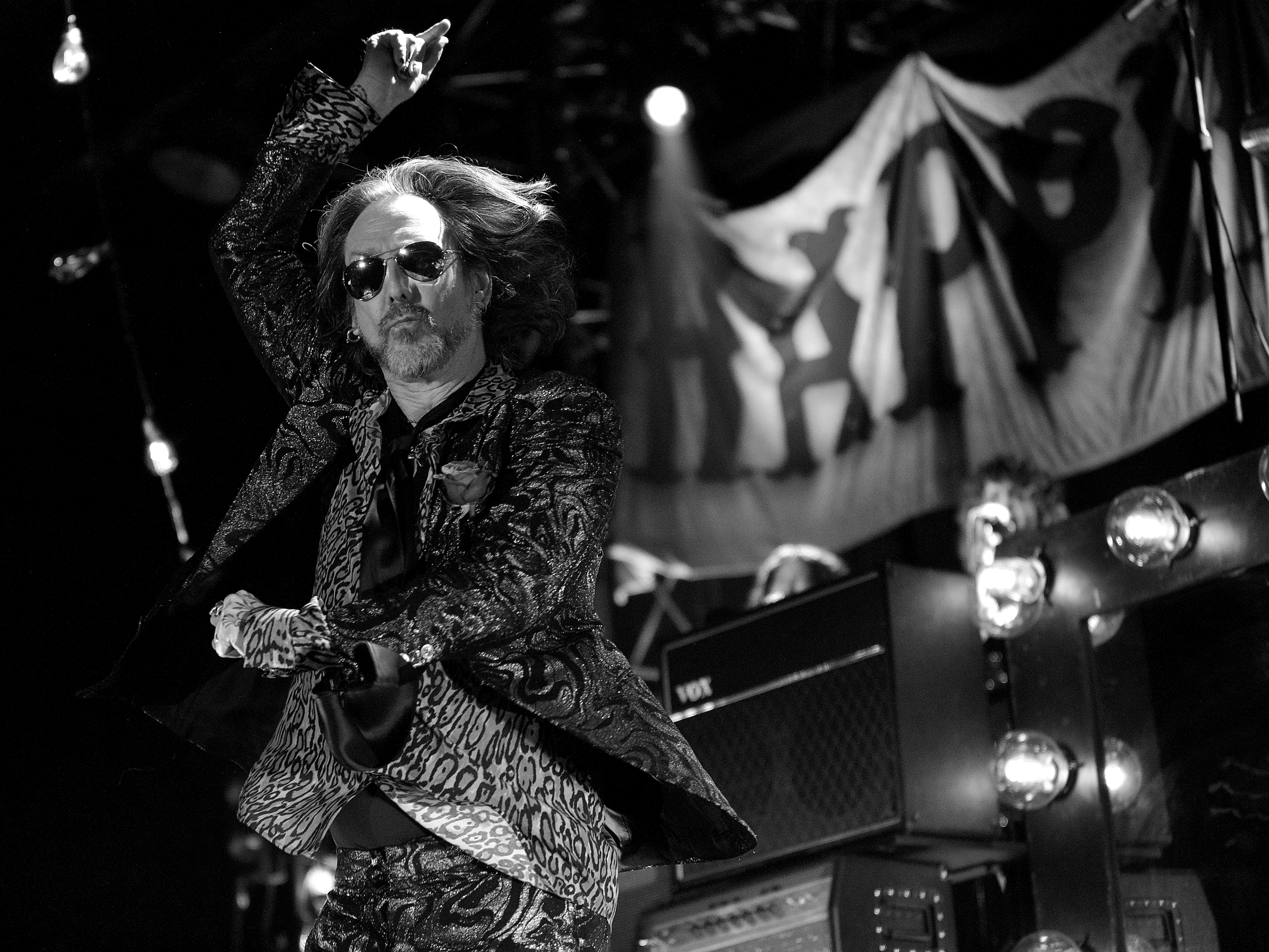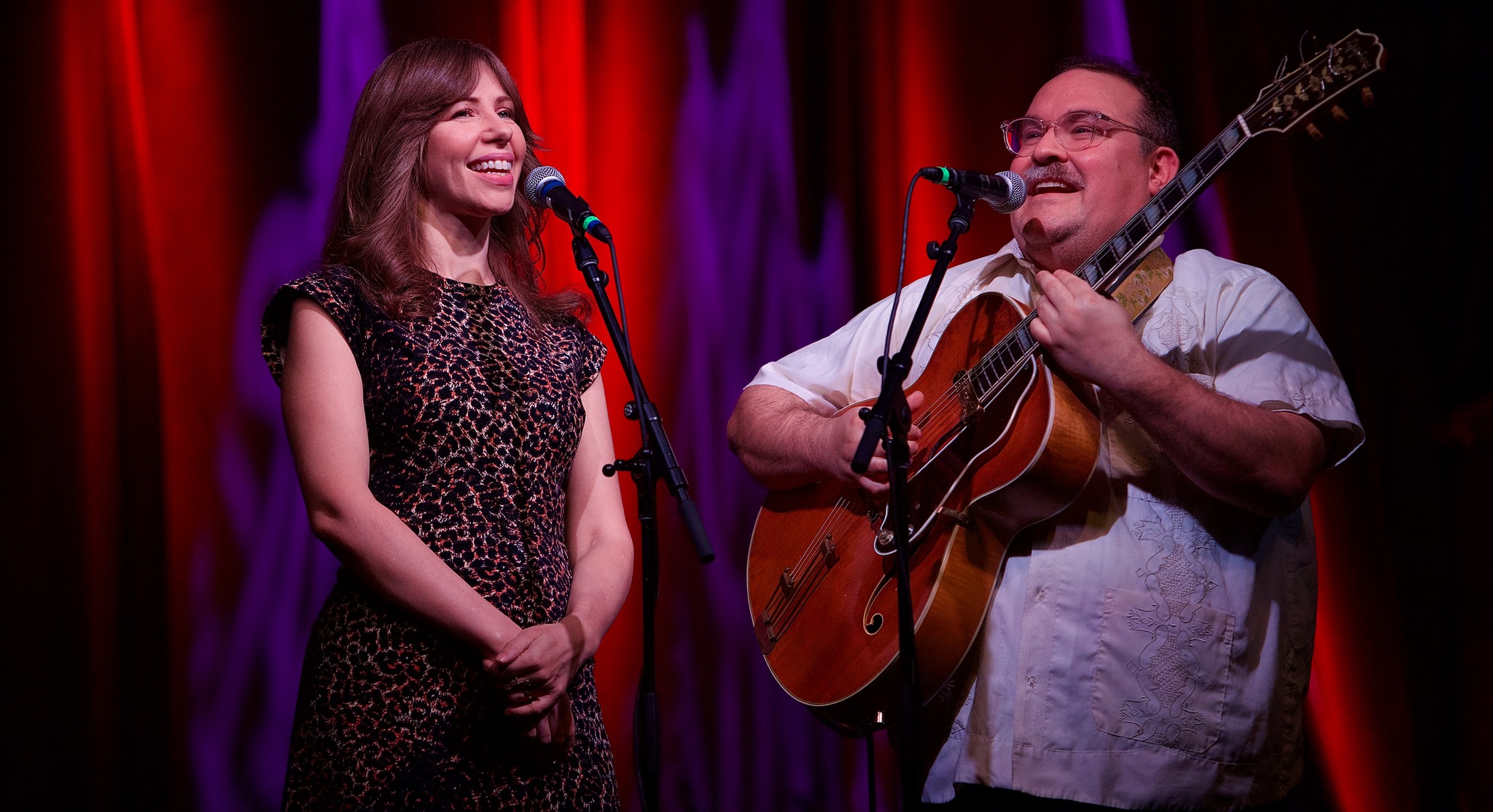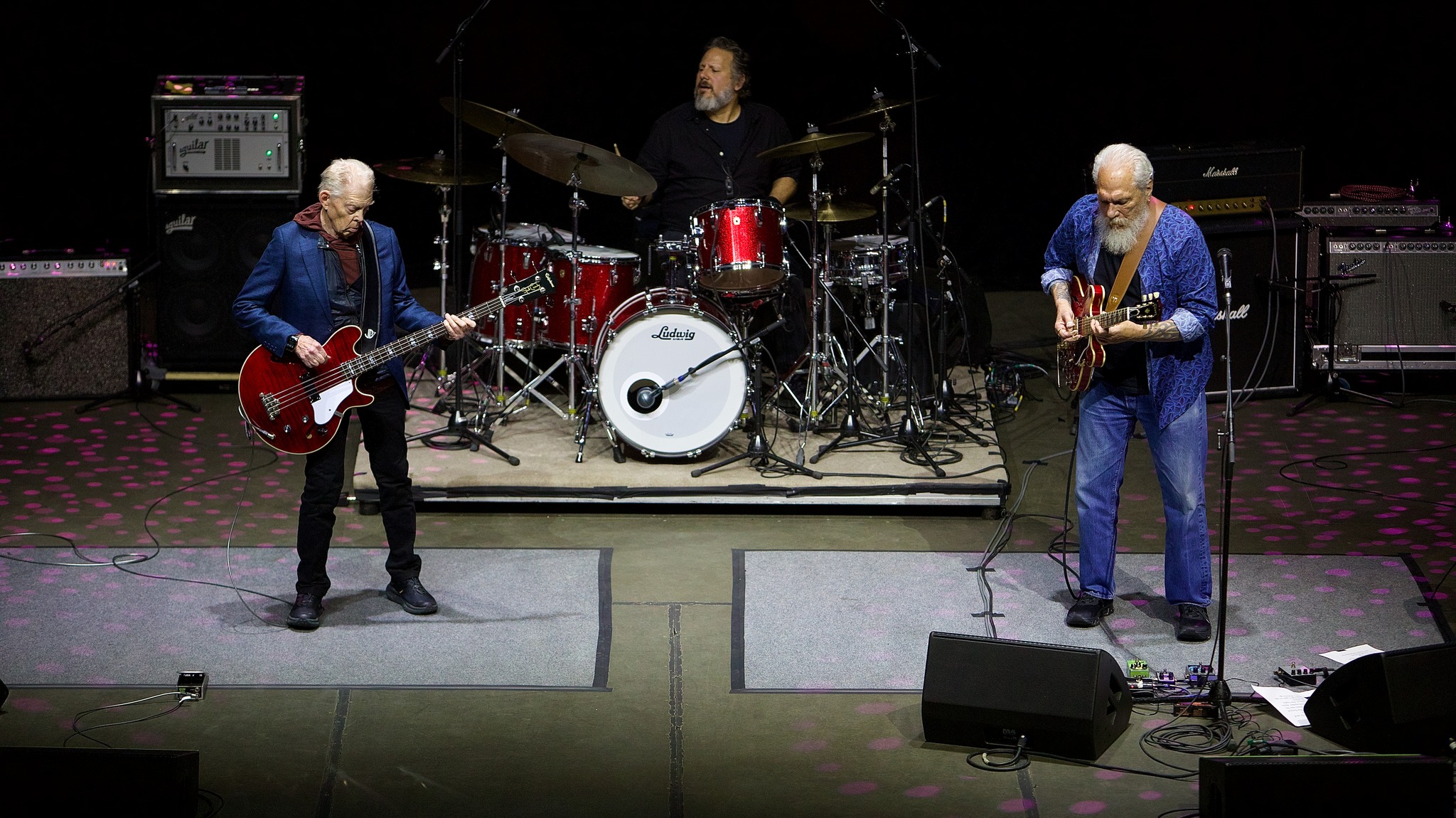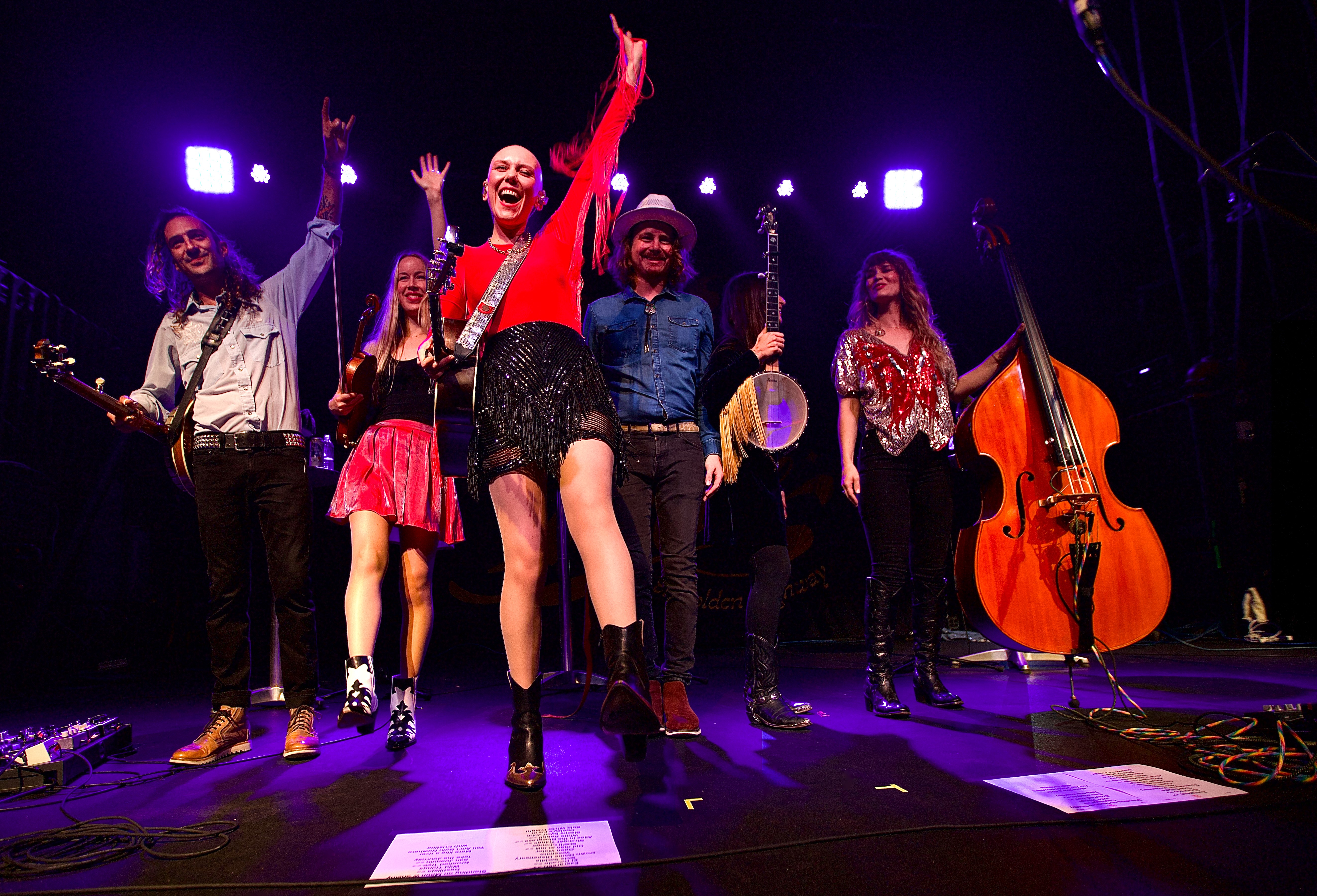Amidst a fresh snowfall, the rhythmic fires of world renowned Zakir Hussain and The Masters of Percussion burned brightly on Tuesday night at Boulder’s Neo-Gothic styled Macky Auditorium. Celebrating thirty years of the revolving door of players that has defined The Masters of Percussion Tour, anyone who has followed this well-known event knew well before showtime that the experience was something that would be memorable, momentous, and magical.


The Masters of Percussion concept was originally born out of an ideal that was bestowed upon Zakir by his late father, the incredible Allarakha. His father encouraged him to seek out talent throughout the states of India and, as an honorable son, that is exactly what he did. As one who is impassioned for the newness and novelty in life and its experience, Zakir eventually branched out. Feeling that the original vision was too limiting, restricting himself as well as those attending his concerts from other traditions and disciplines from around the world, he sought to fill the seats around him with talent from around the globe.
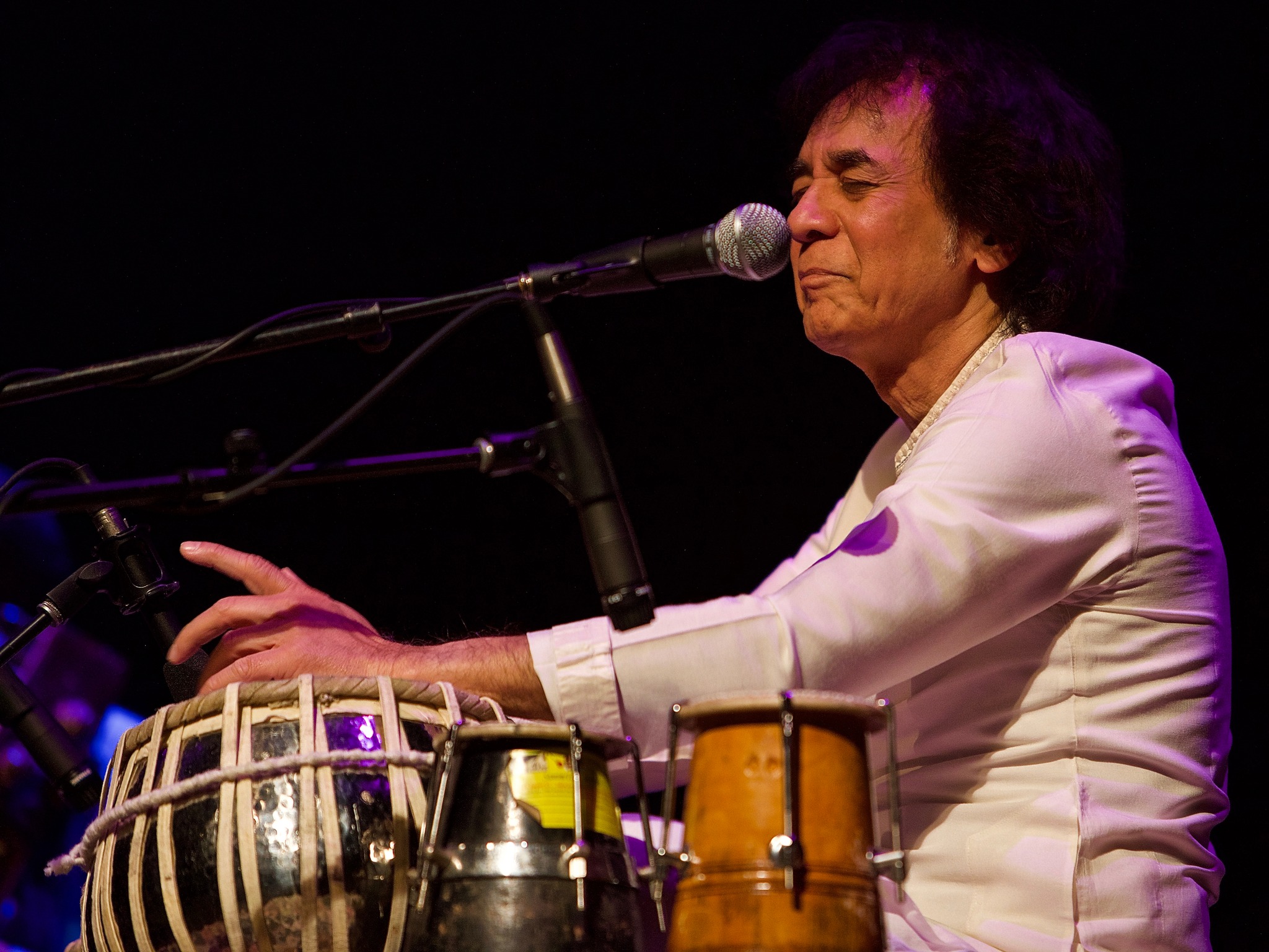
Although anyone would be honored to witness the awe-inspiring tabla proficiency that is Zakir Hussain alone, what brings out the best in his performances is his desire and need to continually expand through the shared experience of performing with other great players. For this leg of the seemingly never-ending story, Zakir has enlisted the skill and artistry of top names heralding from Columbia, India, and Uzbekistan, including Grammy nominated percussionist Tupac Mantilla, Navin Sharma on Dholak, vocalist Sabir Khan on Sarangi, and Abbos Kosimov on doyra. When speaking to the traditional dynamics of these players, it is also important to mention that many were raised in their instruments and instructed by family, adding yet a whole other distinctive layer to the performance.
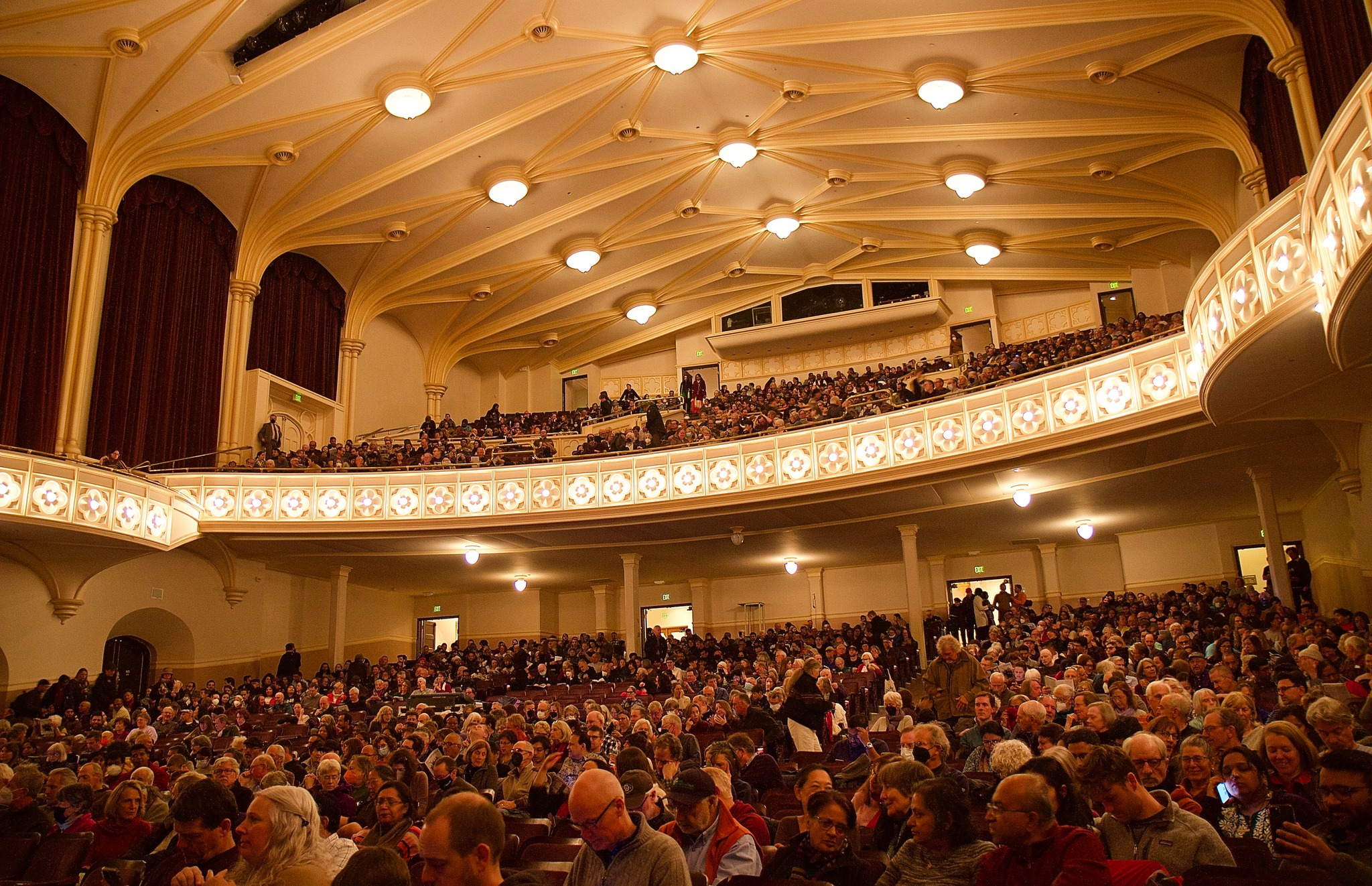
Macky Auditorium seats a little more than 2000 guests and by the time the lights went dim, nearly every seat was filled. With an orchestra section and two balconies, seeing the place fill with patrons of all ages and ethnicities was the epitome of the unity that live world music brings.
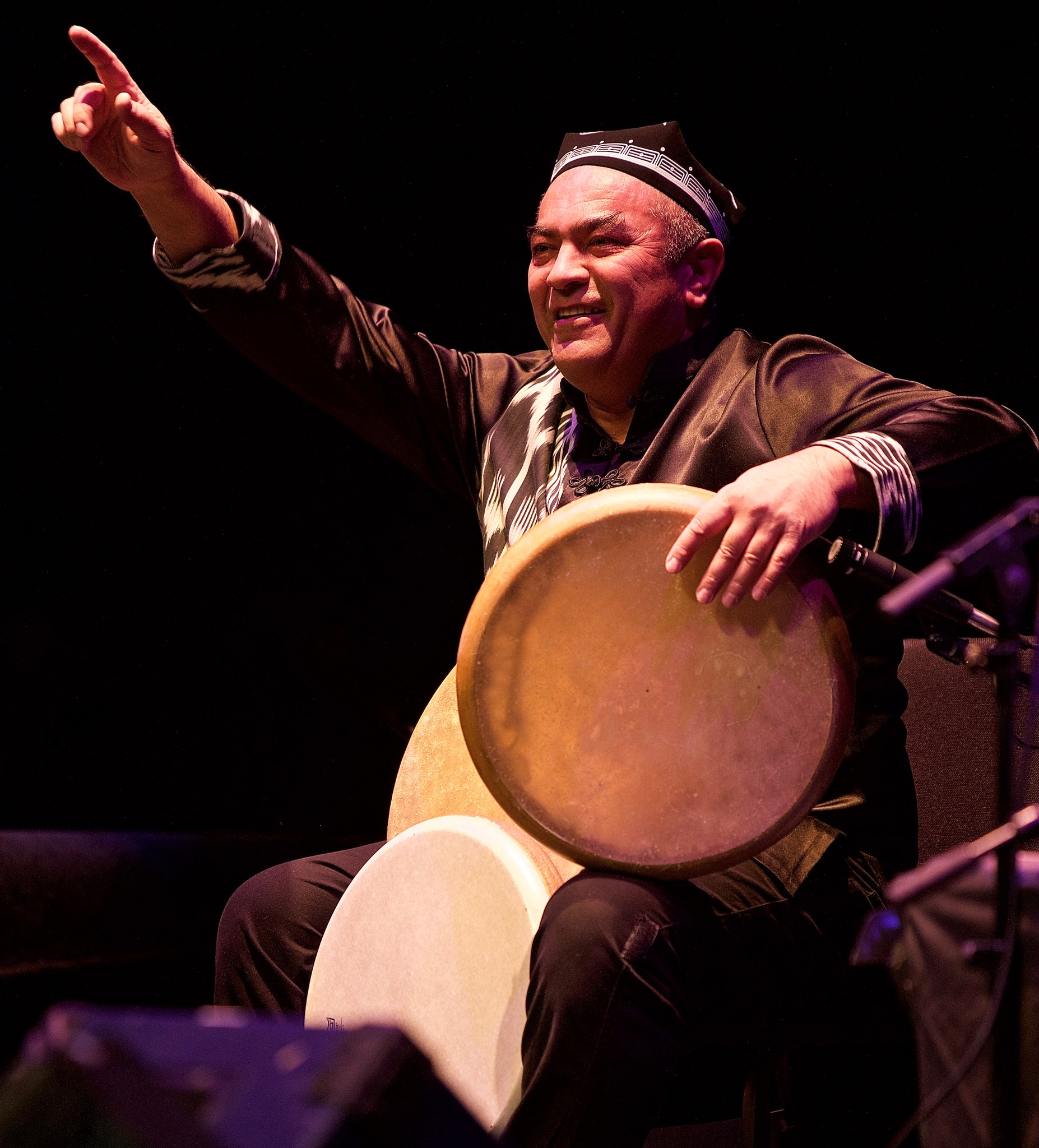

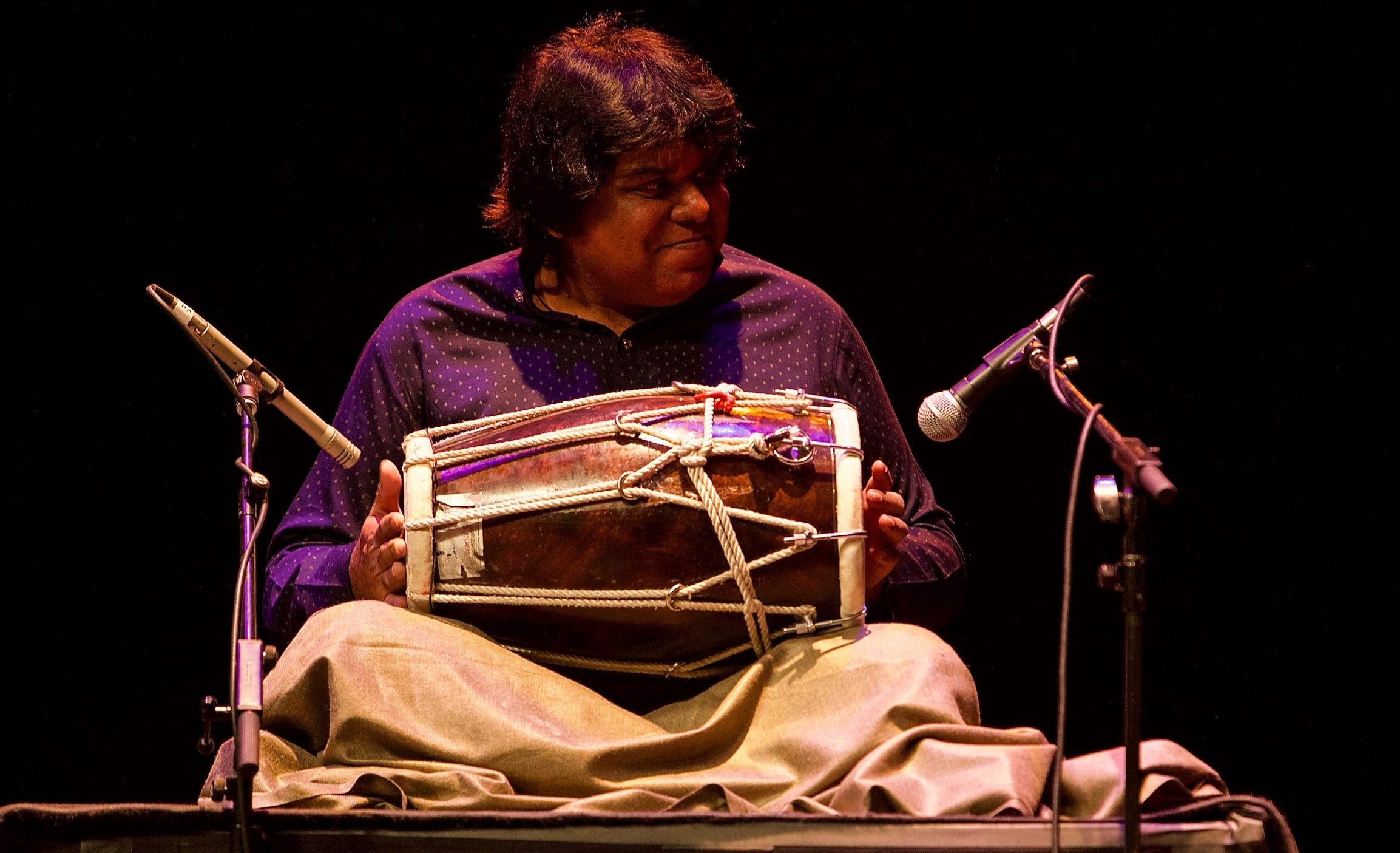
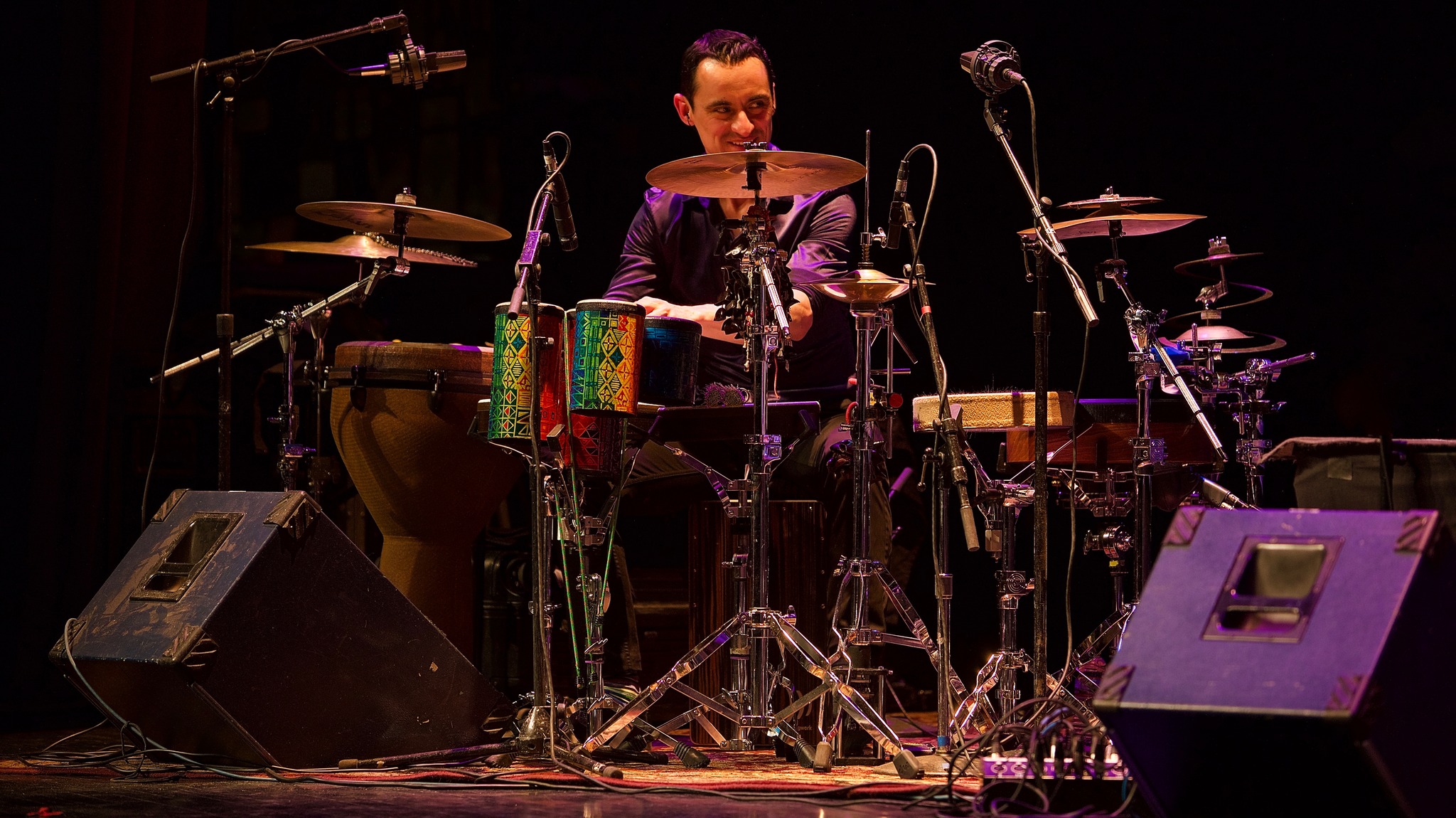
The single 90-minute set began with deep and moving vocals from Sabir. Accentuated by light, ambient percussion from Tupac, this undesignated prayer-like song settled everyone in and pulled focus inward. With the energy of the room set, Tupac made his way to the front of his drum kit and demonstrated for many minutes his talents in rhythm by way of his body as his instrument. From claps and snaps to mouth pops and foot drops and participation from every other body part in between, what he demonstrated at the least is that no one needs an auxiliary instrument to take part in the cadence of existence.
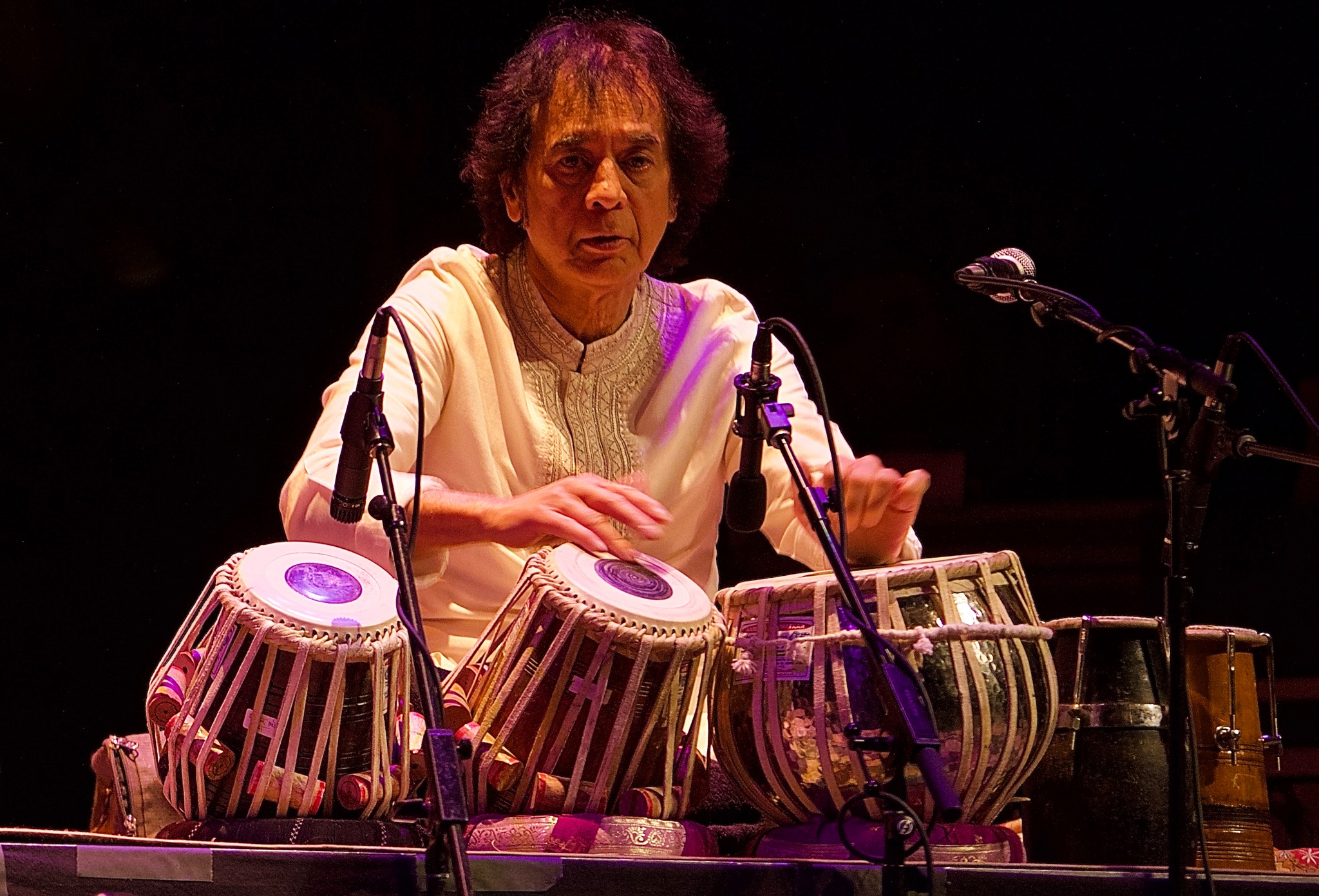
The next movement journeyed on with Zakir’s entrance and conjured imagery of moving through the Indian countryside. Sabir’s sarangi moaned and droned as Navin navigated the low thuds of the dholak, Zakir’s digital wizardry flittered like hummingbird wings, zipping around and through the scene. Tupac’s ever-changing instrumentation behind the drum kit coupled with Abbos’ echoing doyra kept everyone attuned to the path. Before returning to the lone sounds of the sarangi, the group culminated in a ground shaking finish that left the room jarred and smiling with delight.
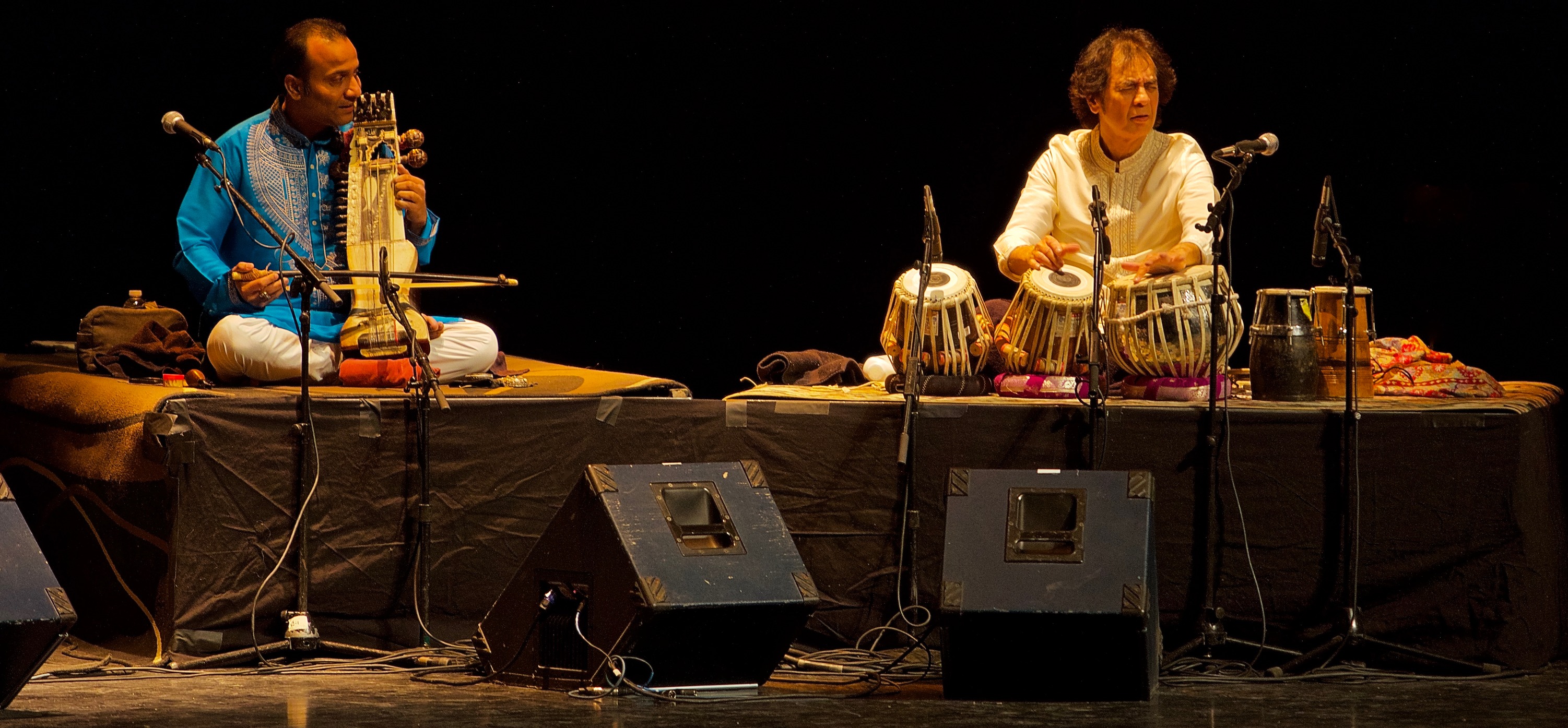
The next section transitioned into a duet of sorts between Zakir and Sabir. The two exchanged at times staring into each other’s delivery and at others, taking inner refuge and focus under closed lids, both honoring their partners with smiles and silent laughter. This portion ebbed and swelled multiple times, shifting between meditation and explosive jubilation time and time again.
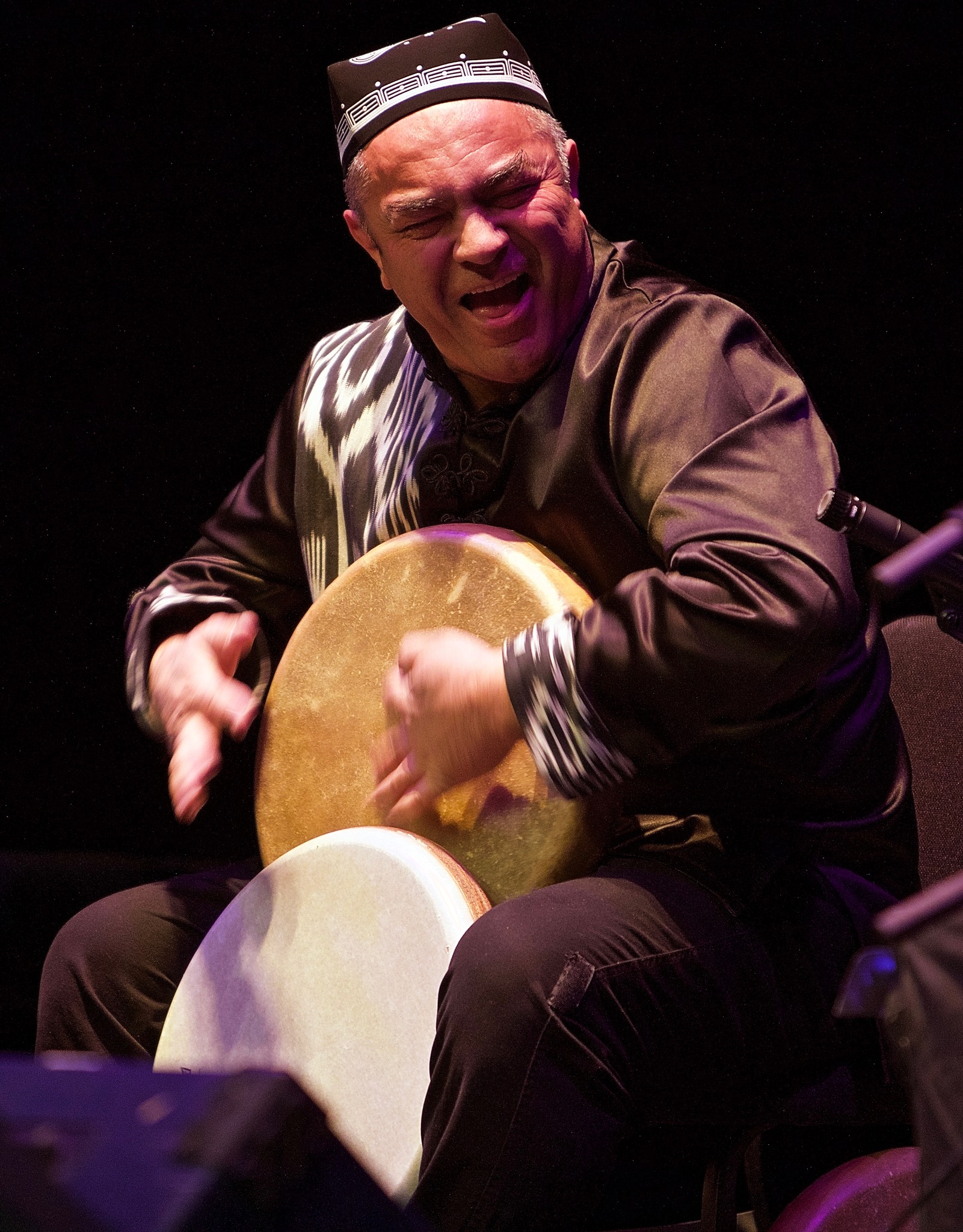
Following a distinct break, allowing the incredibly silent and attentive room to audibly thank the The Masters for the soul resetting thus far, Abbos was offered the opportunity to take the spotlight. Affixed with percussive shakers around the ankle and not one but two doyras, Abbos started his moment in the sun slowly and built to a frenetic ending that had the audience clapping on a specific beat designated by Abbos pointing into the crowd at certain intervals. During this section, he oscillated between doyras and tambourines and, at one point, took to throwing the doyra high into the air and catching it in time, resulting in his own wide-faced grin, a dynamic he shared with most everyone in the room.
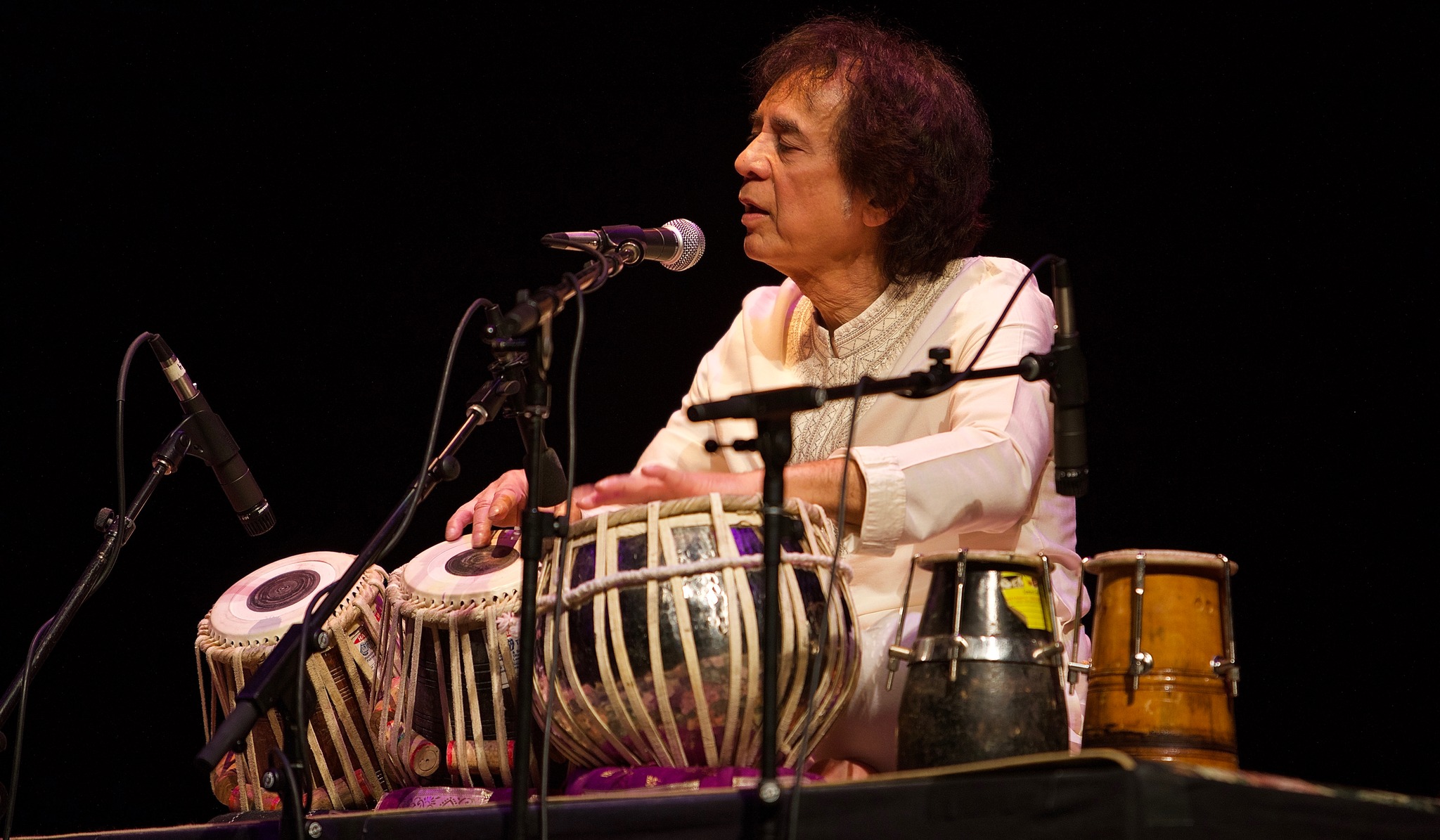
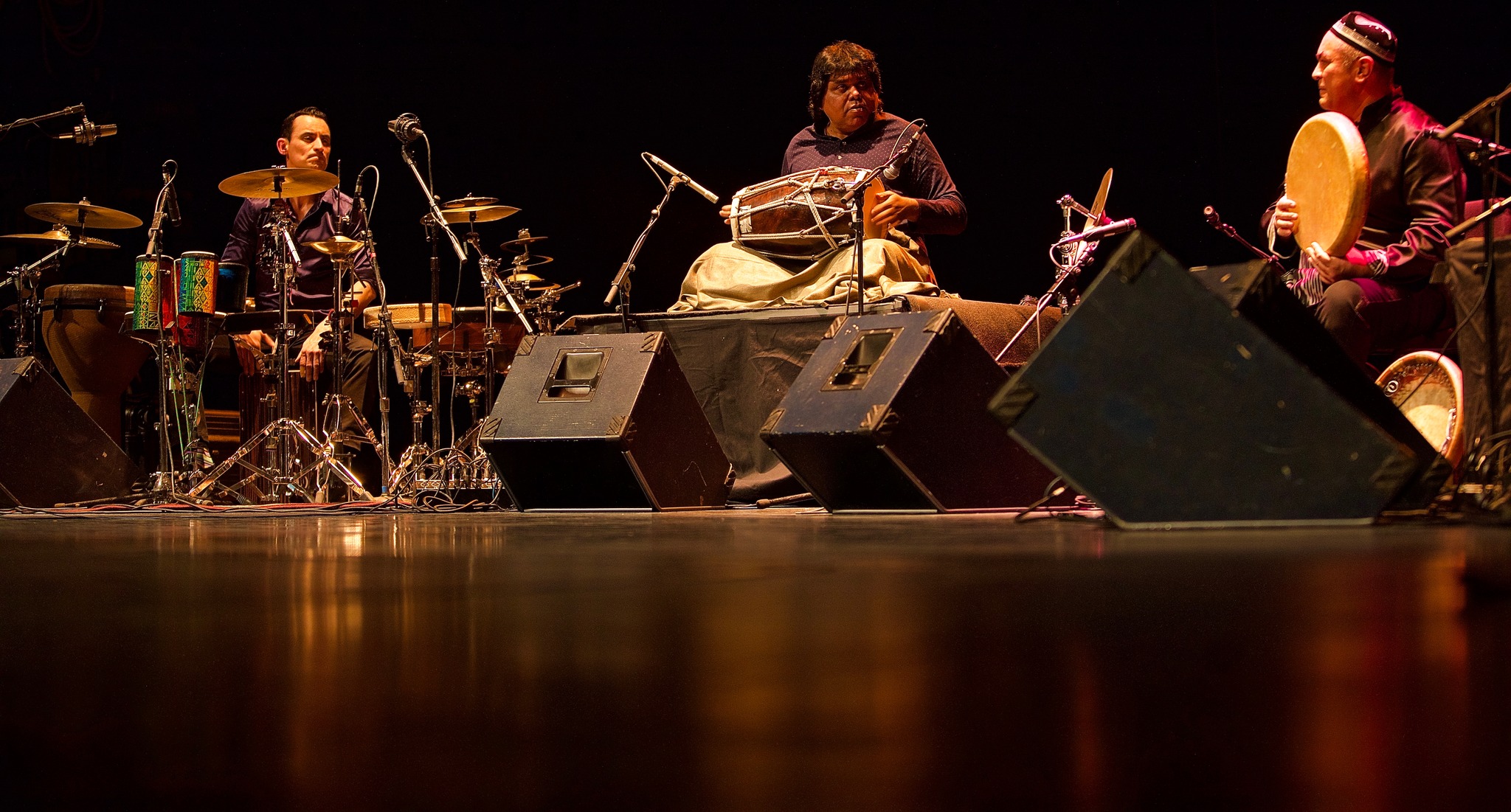
For the next scene, Zakir addressed the audience, first in the dialect of the tabla and then in English, and discussed language, “Language is maybe a little different. Whether it is tabla or doyra or dholak or all sorts of percussion craziness, everyone plays the same S-H-I-D”, this statement causing the audience to spill out the belly full of joy that had been filled repeatedly throughout the set. Returning to the tabla tongue, the humble leader continued to dole sentence after sentence in vocal ornament until finally stopping to translate what he had said, “I just sent you an invitation to come to this concert in the language of tabla. I am sorry it got to you late, you wouldn’t have had to buy tickets. So, in the short conversation, please come sit and relax, have something to eat, something to drink, listen to the concert and go home.” Returning to his second language, Zakir recited more and then translated once again:
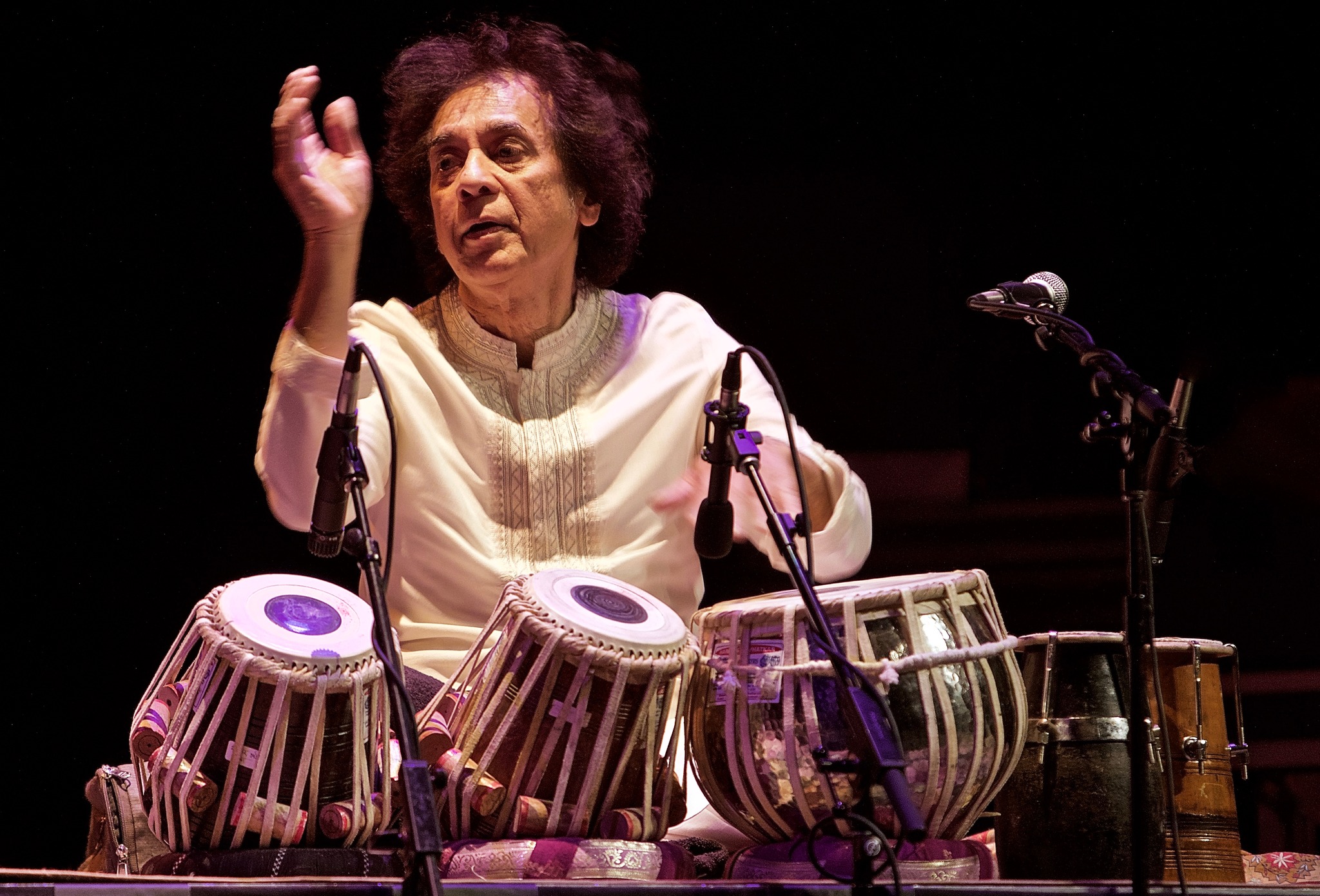
The deer, moving in the forest, looking for food. Takes one turn, McDonald’s is closed. Takes another turn, Pizza Hut ran out of cheese. But then gets startled and runs away. So those movements, plus that running away, when the deer runs, it’s a beautiful half flying, half running gait, so to express all this in syllables, this is the one thing that the Indian language excels in is the expressive element.
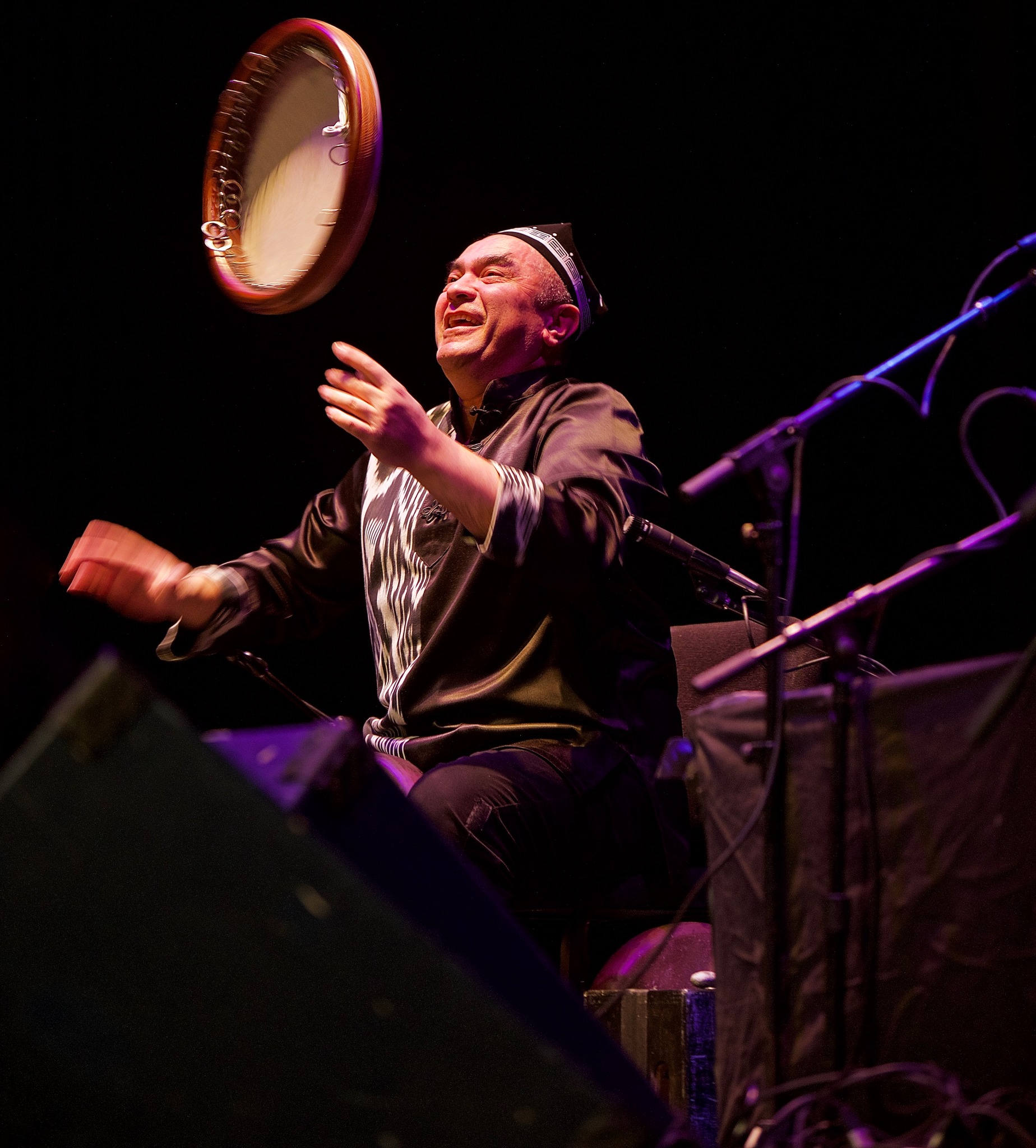
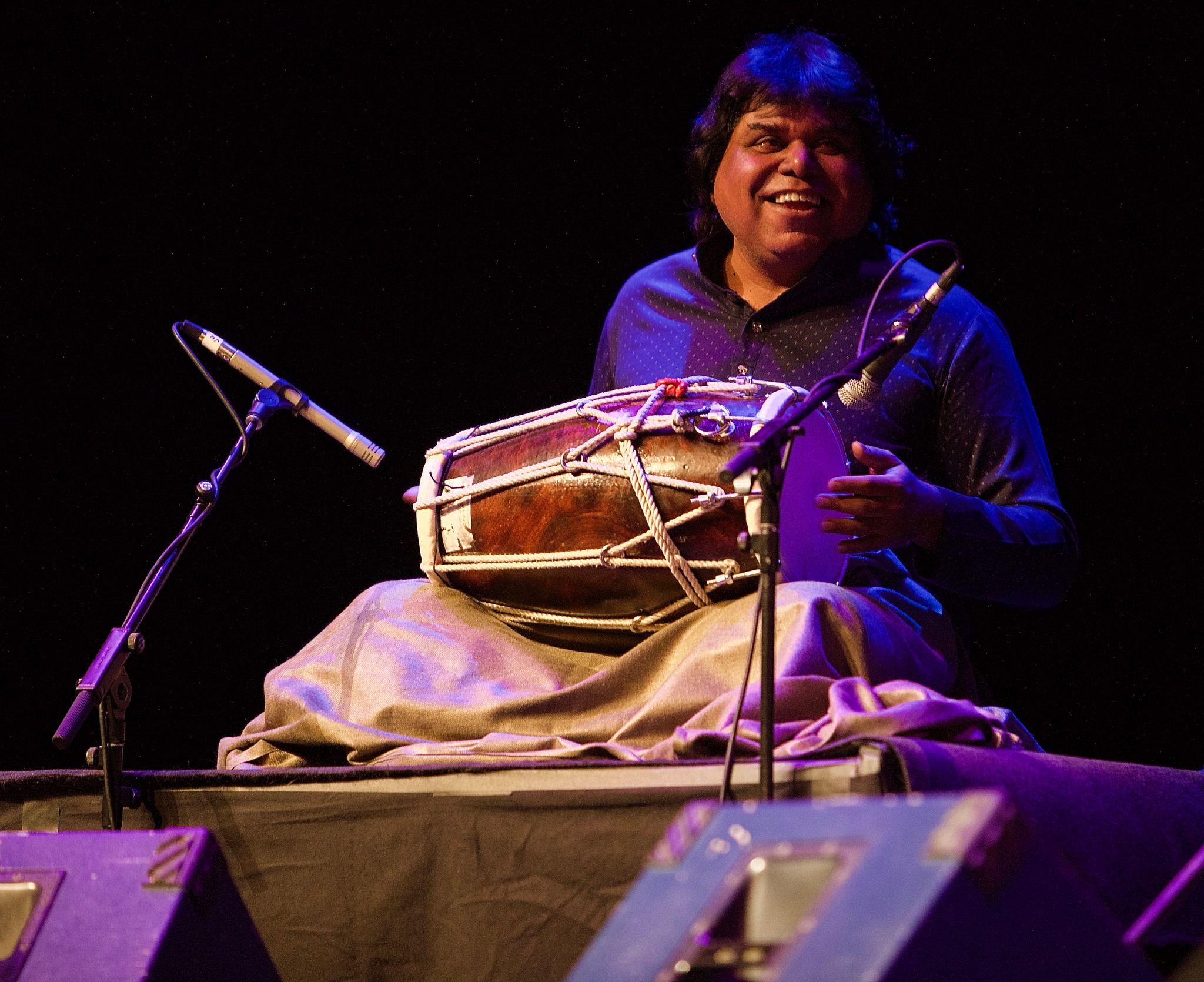
Giving over to laughter at the odd imagery of the timeless and modern mixed elements described, the crowd celebrated the light hearted nature that is the root of this serious but jovial spirit. Washed in a room full of jubilation, the quintet moved into the closing piece of the night, taking the 2000 travelers on a final ecstatic and fiery flight that contained focused showcases, allowing each of the members to glow independently one last time. With the final thunder being struck, the five fingered hand of the infinite approached the edge of the stage, and standing hand in hand, grins as big as those who had watched them lay it all out, took a final bow and graciously thanked the crowd before walking off.
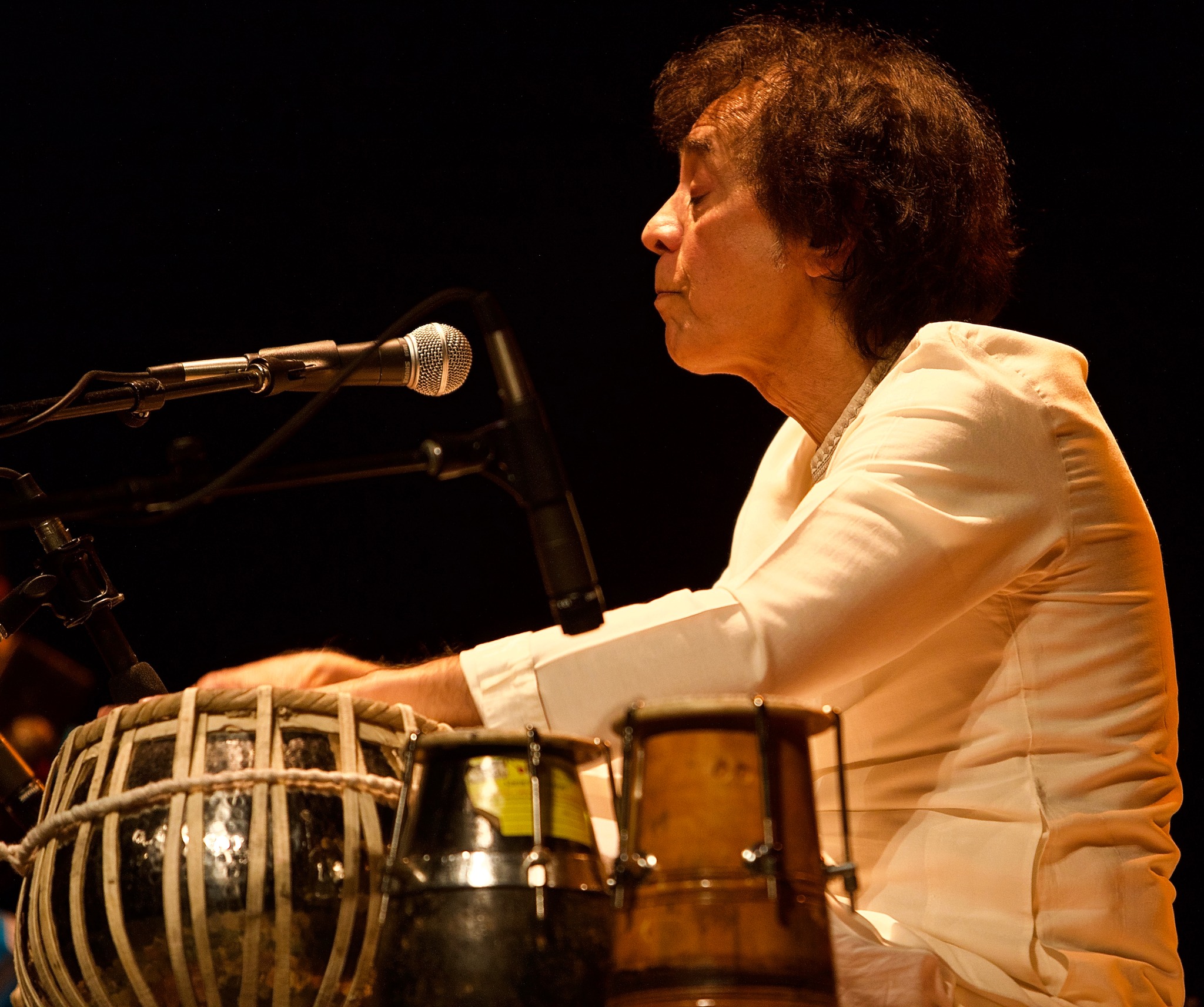
In the afterglow of yet another incredible performance, I caught up with a gentle soul, a seeker of sound, who had caught the last three performances on the tour and asked him which was the best he had seen. He replied, “There is no best one because each of them have been very different. Zakir and The Masters don’t perform the same show night after night and what keeps me coming back is that surprise and wonder of the impromptu that makes this music feel and sound so alive.” Absorbing his answer, I queried further, asking him how he would describe seeing one of these performances to someone who knew nothing of Zakir, the tabla, or world music in general. As he paused for a moment, formulating his response, his smile stretched and his eyes shone, and finally stated, “Seeing Zakir in these intimate venues with these incredible musicians is like being bathed in sunshine and kissed by God”, and with that he winked and walked out into the still snowing night, leaving me with a smile and the perfect descriptor for yet another perfect night of good living.
